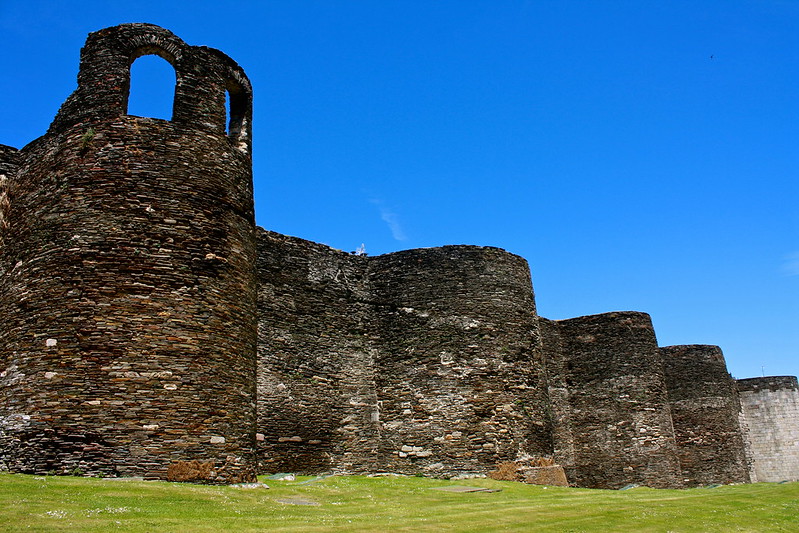Photo Post: The Roman-Walled City of Lugo, Spain
 |
| Roman walls |
Last year, when I was teaching down south, I would visit the nearby city of Linares about once a month or so for the friends, the food, and the train station. It had become kind of like a second home when it came time for me to say adios to Andalucía last May; visiting so often made the town much more familiar than others in the region.
This year, I’d have to say that the northwestern Spanish city of Lugo has taken up a similar role in my life. Although I’m living in Santiago de Compostela—a two-hour bus ride to the west—I’ve been to Lugo three times already since June, and I’ll probably be heading back again at least once or twice this year, too.
 |
| Roman walls with remaining turret |
The capital of a sparsely-populated province of Galicia, Lugo is most famous for its incredibly well-preserved Roman walls that surround the city’s entire historic core. Within the perimeter marked out by the 2,000-year-old walls, you can find a cathedral that’s a hodge-podge of architectural styles, a grand central square that leads off into streets crammed with lively tapas restaurants, and yellow shells here and there directing pilgrims along the Camino Primitivo route of the Camino de Santiago.
 |
| Lucenses dressed up as Romans |
It was the Camino that initially brought me to Lugo; I had moved out of my apartment in Úbeda last June intending to walk the final five days of the “Way of St. James” pilgrimage…but I was dragging my 50-pound suitcase and bags with me. Thankfully, Annie—a fellow language assistant I met on the plane ride to Madrid in September—was living in Lugo and graciously allowed me to leave my belongings at her place while I walked across Galicia. What a friend!
When I came back to town after eight days on the Camino, Lugo had already started its annual Roman reenactment festival—Arde Lucus, “Lugo Burns.” Dramatic, I know. In this festival, the lucenses chose to dress up as toga-clad Romans or fur-wearing castreixos, the Celtic pre-Roman people of Galicia. For three or four days, there was always something going on in the old town, from gladiator “fights” to parades to artisan markets. The Roman settlement of Lucus Augusti felt like it had come back to life, indeed.
 |
| Octopus |
Back in Spain for Year Two—this time in Galicia—I heard the rumors that Lugo’s actual city fair, the one dedicated to San Froilán—would soon be celebrated. During the second week of October, a few friends and I braved the carsick-inducing bus and arrived at a warm, sunny Lugo filled to the brim with people dressed to the nines. The San Froilán festival centers around the consumption of pulpo á feira, literally “fair-style octopus” that has been slow-boiled, snipped with shears, and garnished with olive oil and smoked paprika. Never before or since in my life have I had such fresh, tender, and juicy octopus, and I’m anxiously looking forward to going back this October.
 |
| A good sobremesa beneath the soportales |
What was your favorite picture from this post? Have you ever been to Lugo before? What other well-preserved Roman cities can you think of? Comment below!



